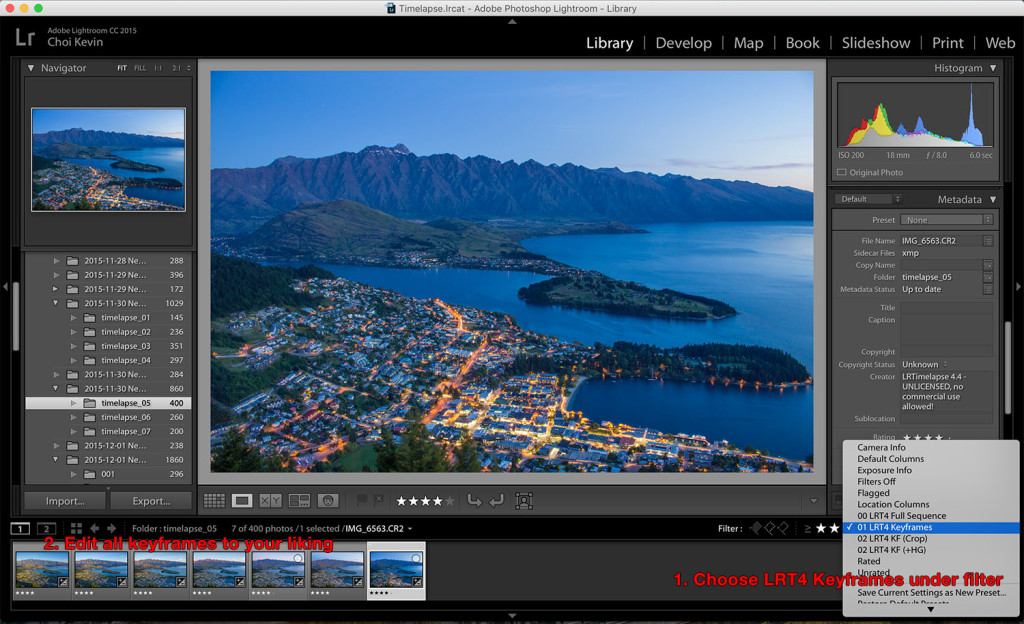
- Open a previous lrtimelapse project how to#
- Open a previous lrtimelapse project pdf#
- Open a previous lrtimelapse project manual#
Once you notice the exposure meter has gone down one-third of a stop, change your shutter speed by one-third. Keep track of the intervalometer's timing in your head or say the seconds out loud if that makes it easier. Repeat this whenever you want, but make sure to not bump the camera and make sure you start the remote again at the right time. Review the histogram and press Start on the remote to keep shooting. Once the sun sets and the light starts changing, hit Stop on the remote immediately after a photo has been taken. I have image review off to save battery life. Dial in your settings for the proper exposure and set your remote to the desired interval. Frame up your shot, make sure it's level and focused, disable IS (Image Stabilisation), and disable AF (Auto Focus). The reason we are using an external remote or intervalometer is that it is much easier to ‘stop and start' the sequence to change settings and check the exposure than when using a built-in intervalometer. In short: you will be keeping an eye on the histogram while shooting and adjusting the shutter speed and eventually ISO in between photographs until the light stops changing. Open a previous lrtimelapse project how to#
Now that we've got all the camera gear and settings covered, let's have a look at how to actually shoot the holy grail. Holy grail timelapse settings on a Canon 6DMkII How to shoot a holy grail timelapse
Make sure your battery is charged, your memory card is empty and that your file numbering won't cross over from 9999 to 0000 as that is just an annoying thing to fix (but quite easily done in Lightroom). For intervals you can choose anywhere from 6 to 12 seconds (on average). You don't want it to stop shooting because you left it on a 200 shot limit. Choose an interval on your remote and make sure it runs for an infinite amount of shots. Configure your Shutter Speed, Aperture and ISO so your frame is exposed properly (not under- or overexposed). We'll be manually changing the ISO later during the shoot. Choose an ISO and WB setting that suits the start of your shot and stick to it. Make sure neither ISO (sensor sensitivity) and White Balance (colour temperature) are on automatic mode. We will be in charge of the settings, not the camera. 
Open a previous lrtimelapse project manual#
Make sure your camera is in Manual mode.Frame up your shot, turn off Image Stabilisation (IS) if your lens or camera has it and make sure your AutoFocus (AF) is turned off once you've focussed.You'll need this data to smooth out the flickering caused by the changing exposure settings. RAW files contain much more data than JPEG files. Here are the settings you want to apply to your camera to shoot a Holy Grail:

Open a previous lrtimelapse project pdf#
Keep in mind that you can download the Holy Grail Cheat Sheet as a handy one-page PDF by signing up to The Time Warper Weekly, your favourite weekly timelapse newsletter.

Let's go over this step by step so we don't miss anything. What camera settings do you use to shoot a holy grail timelapse? You can check out all the camera gear I use here. A camera with Manual mode and RAW photographs.What gear do you need to shoot a holy grail timelapse?Īs complicated as the holy grail timelapse used to be, it's very straightforward now.







 0 kommentar(er)
0 kommentar(er)
